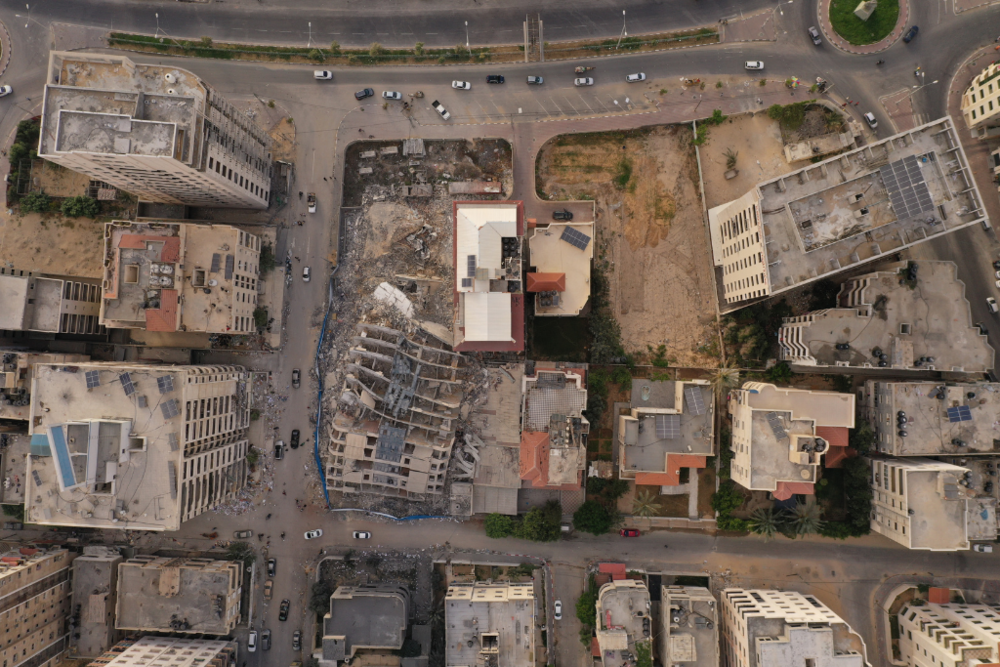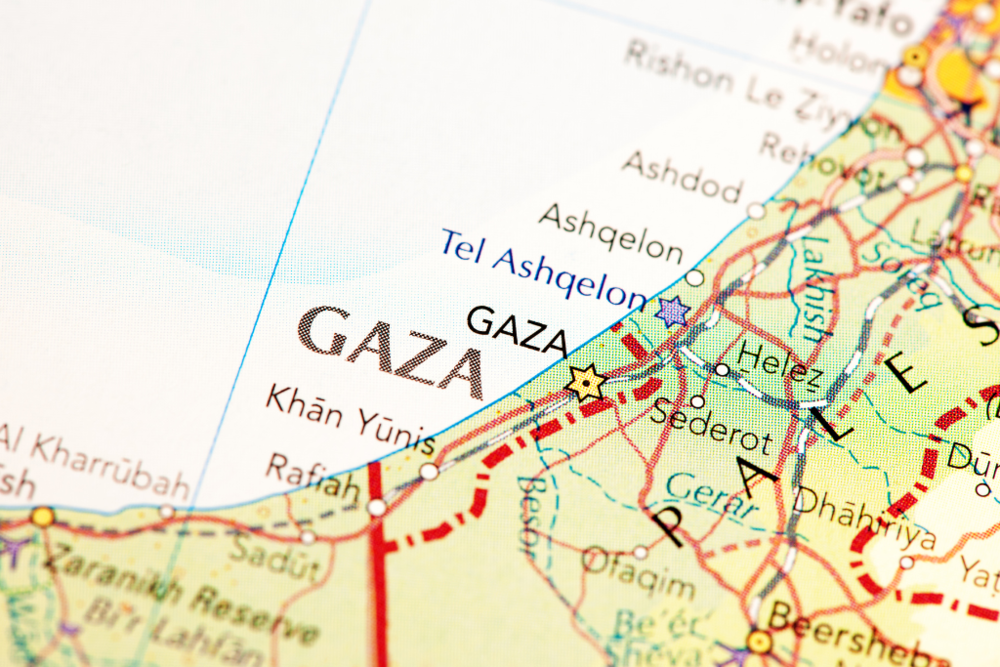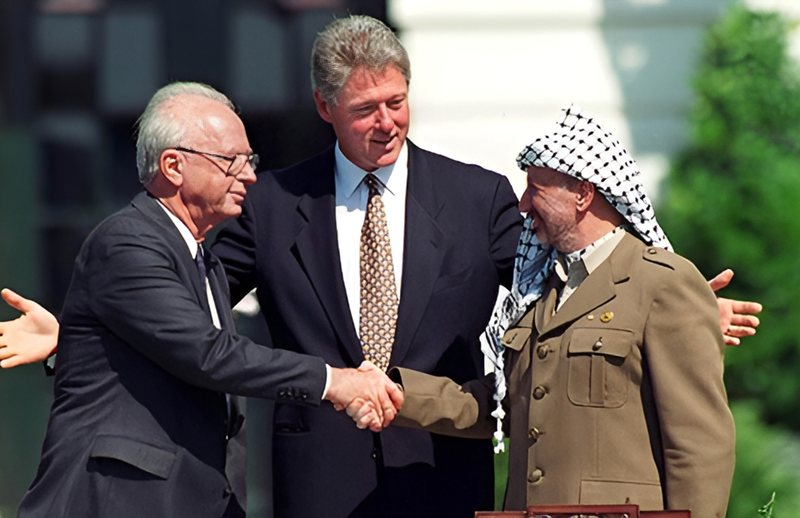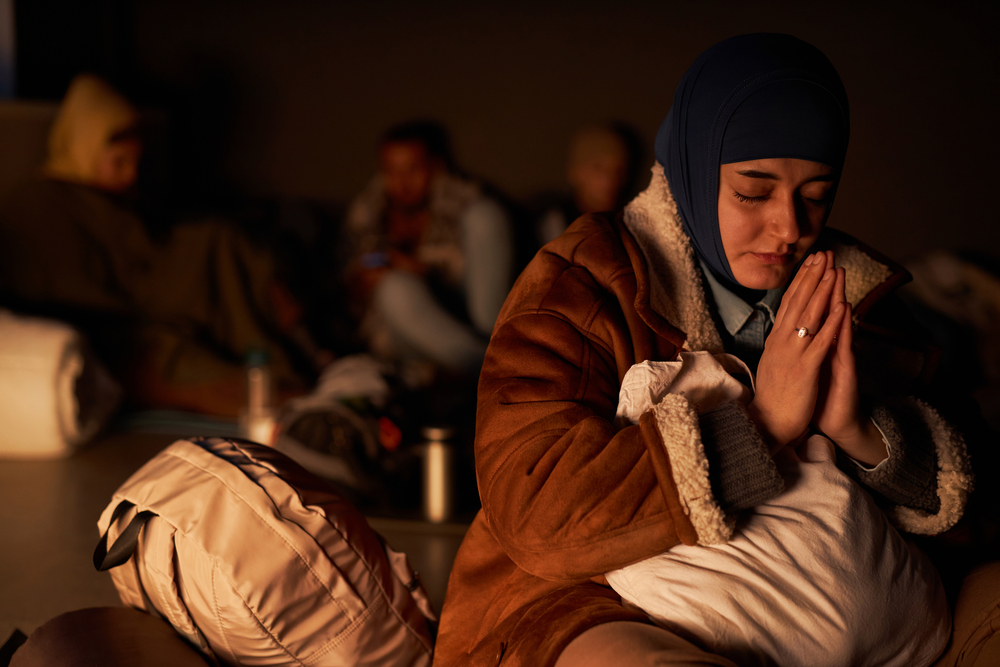The Gaza Strip is a region belonging to the Palestinian Authority, isolated and surrounded by the Mediterranean Sea and Israel. This article explores the history of conflict in this area, known as 'the world's largest prison,' and examines potential solutions.
―
Q: What is the Gaza Strip?
―

A: The Gaza Strip is an isolated area enclosed by the Mediterranean Sea and Israel, spanning about 365 square kilometers (141 square miles), and is one of the most densely populated regions in the world, with over 2 million inhabitants.
The Gaza Strip has a complex political and historical background. Since the establishment of the State of Israel in 1948, it has been a focal point of conflict between Palestine and Israel.
Currently, it's part of the Palestinian Authority, with the Islamist armed faction Hamas exercising actual control.
The economy of the Gaza Strip faces significant challenges due to blockades by Israel and Egypt. The region struggles with high unemployment, poverty, and limited infrastructure and resources.
Despite having a population exceeding 2 million, the absence of an airport and extremely restricted access to borders and territorial waters have led to the Gaza Strip being referred to as 'the world's largest prison.'
In October 2023, renewed clashes between Israel and Hamas in the area posed a threat to world peace. This ongoing conflict perpetuates continuous tension and insecurity for the residents of the region.

―
The Gaza Strip Conflict: History and Current Situation
―
The conflict in the Gaza Strip has a long history that has developed over centuries, originating from ethnic and political discord between Israel and Palestine, continuing from the mid-20th century to the present.
History of the Gaza Strip Conflict
● 13th Century BC: Migration of Jews and Philistines
Jews, having escaped from Egypt, migrated to Canaan (now the Palestinian region), considered the promised land. Simultaneously, the sea people, the Philistines (ancestors of Palestinians), also migrated to the southern coast, sparking territorial disputes between the two peoples.
● AD 135: Jewish Diaspora
The Jews were expelled from Canaan by the Roman Empire and were forcibly dispersed to places like the Iberian Peninsula.
● 1947-1949: Establishment of Israel and the Start of Conflict
The conflict intensified with the establishment of Israel in 1947, following a UN resolution. During this period, Gaza was under the Arab government of Palestine.
● 1950-1960s: Israeli Occupation and Escalation of Conflict
Following the Third Middle East War, Israel began to rule the Gaza Strip from 1967, deepening the conflict between Palestine and Israel.
● 1960-1980s: Six-Day War and Continued Occupation
In the Six-Day War of 1967, Israel not only occupied the Gaza Strip but also the West Bank and the Golan Heights, complicating the conflict in Gaza. In the early 1980s, Israel began building Jewish settlements in the Gaza Strip.
● 1990s: Oslo Peace Process and Hope
In 1993, the Oslo Peace Accords between Israel and Palestine led to the lifting of some military controls in the Gaza Strip, raising hopes and expectations for peace.
● 2000s-Present: Ongoing Conflict and War
However, from the 2000s to 2024, the Gaza Strip has continued to experience ongoing conflict and war. The conflict between Israel and Hamas has escalated, with residents suffering from infrastructure destruction and loss of life.
―
Q: What are the Causes of the Gaza Strip Conflict?
―

A: The Gaza Strip conflict stems from a complex web of causes, primarily driven by nationalism, land ownership disputes, and economic interests. Various stakeholders vying for control of the region continue to clash with opposing groups, perpetuating the ongoing conflict.
● Ethnic Conflict:
The ethnic discord between Israel and Palestine is central to the Gaza Strip conflict. Israel is based on Jewish nationalism, while Palestine shares Arab ethnicity and Islamic faith.
● Land Ownership:
The issue of land ownership is at the heart of the Gaza Strip conflict. This area has been a battleground for land disputes between Israel and Palestine for a long time.
1. Border Area Disputes:
The boundary issues between Israel and Palestine are a major element of the conflict, especially in the Gaza Strip's border areas, where disputes over agricultural land and fishing rights are frequent.
2. Land Abandonment and Development Disputes:
Within the Gaza Strip, individual disputes arise over ownership and rights to use housing and agricultural land.
3. Jewish Settlement Disputes:
In the 1980s, Israel began building Jewish settlements in the Gaza Strip, complicating the issues of land ownership and usage rights.
● Economic Interests:
The Gaza Strip's economy is extremely fragile. Economic activities mostly depend on international aid and smuggling due to barriers and sea routes controlled by Israel.
According to IMF data, as of 2020, the unemployment rate was 45%, the poverty rate was 53%, and 65.9% of households were in a food crisis.
―
Q: What is the Two-State Solution?
―

A: The 'Two-State Solution' proposes the creation of two states for Jews and Arabs and has been suggested as a resolution for almost a century.
● In 1947, the UN adopted a plan to divide Palestine into two states for Arabs and Jews, with the religiously significant Jerusalem under international administration. However, this plan was rejected by Palestinian and Arab leaders, and Israel declared independence.
● The Oslo Accords of the 1990s reignited discussions about the Two-State Solution but ultimately failed. The accords led to the establishment of the Palestinian Authority, which has limited self-governance in some occupied areas, but significant differences in opinions persist between the two sides.
● In October 2023, the outbreak of war between Israel and Hamas brought the Two-State Solution back into international focus. However, as of 2024, Israeli occupation continues, and the expansion of Israeli settlements and the rights to an independent Palestinian state remain indefinitely postponed.
In this context, the Two-State Solution still faces challenges. It requires major concessions from both sides: Israel would have to give up current land, and Palestine would have to forfeit most of the territory lost since 1948. With neither side willing to compromise, the parallel lines between them have not converged.
―
For Peace in the Gaza Strip
―

Resolving the Gaza Strip conflict is a lengthy journey towards peace in the Middle East. In this process, cooperation among the international community, Israel, Palestine, and other regional stakeholders is essential. Several key elements are needed for this:
● Resumption of Political Dialogue
Reinitiating political dialogue between Palestine and Israel is crucial. Both sides must seek peaceful solutions through dialogue.
● Strengthening Multilateral Negotiations
It's important to reinforce multilateral negotiations based on the 'Two-State Solution.' Active participation from not only Israel and Palestine but also the UN, the USA, and other international stakeholders is necessary.
● Infrastructure Reconstruction and Humanitarian Aid
The infrastructure in the Gaza Strip has been severely damaged due to ongoing conflicts. The international community should contribute to improving the quality of life for residents through infrastructure reconstruction and humanitarian aid.
● Increasing Education and Cultural Exchange
Enhancing education and cultural exchanges between Palestine and Israel is vital. It's important to instill a culture of understanding and respect in the younger generation. This can lay the groundwork for long-term peace as part of the 'Two-State Solution.'
“Urgent efforts to improve the situation in Gaza must move forward swiftly, but let us not lose sight of the broader goal: resolving the Israeli-Palestinian conflict, ending the occupation and realizing a two-State solution on the basis of UN resolutions, international law and bilateral agreements”, she said, speaking from Jerusalem”
- Lynn Hastings, Deputy Special Coordinator for the Middle East Peace Process -
Learn more : What is a forcibly displaced population? One Hundred Million Refugees Around the Globe |
Written by Sharon Choi
Director of Planning
Sunhak Peace Prize Secretariat

